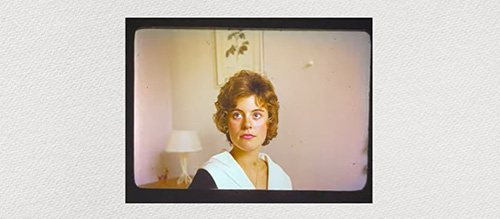False Memories – A Pseudo-Documentary (2022) Review
False Memories – A Pseudo-Documentary (2022)
Director: Jack Caffrey
Screenwriters: Jack Caffrey
Starring: Jack Caffrey
The power of images cannot be understated. From drawing to sculpture, from photographs to moving pictures, visual culture has been used since the dawn of humanity to externally represent the inner reality of human existence. False Memories, the self-styled “Pseudo-Documentary” from filmmaker Jack Caffrey, is about that very connection. The film takes viewers on a journey through the photos of a nearly anonymous woman, and in so doing asks bigger questions about humanity, our history, and our perceptions.
Caffrey purchased a box of photos from a shop in Nantwich, UK. The photos were from a woman known only as E. King, and they document only a fraction of life in the 1960s and 70s after she received a camera. There isn’t necessarily a cohesive narrative, however, so Caffrey is tasked with constructing one – as he describes it, this isn’t “the story of her life, but is a story of her life.” The mystery of this individual and her story, or what can be ascertained from the photographs, is a fascinating hook that demonstrates the power of film to provoke empathy and interest.
Photographs and images used throughout the film are presented on a background that resembles a white piece of scrapbook paper, representing the blank slate from which Caffrey began the film’s construction. He had no idea who this woman was, and decided to call her Edith. The images are shown using a variety of montage techniques. Sometimes they sync with words to reinforce ideas, other times they’re flashed in quick succession to demonstrate the fleeting moments in life they ultimately represent. The other primary element is Caffrey’s narration which pairs wonderfully with the tone of the film – it’s inquisitive and soothing, keeping the focus on the subject and topics that arise throughout the course of the short runtime.
E. King’s story is interesting as a sort of synecdoche for modern Western life, and, in many ways, the human condition as a whole. There are photos that show the process of learning to use the camera, photos following her engagement, and a photo of her daughter. Her documented travels throughout the world offer a look at a variety of people from tourists (who could be easily mistaken for a person from 2022) to locals, showing the conditions in which each operated during the period they were photographed. Caffrey pulls back from those specifics to describe the similarities among all people, both good and bad, and demonstrates how these similarities have been captured across time in image. The emotions displayed and taken from visual culture persist, and are a vital aspect of all human history according to Caffrey.

There are weaknesses in the film’s presentation, though. The film lacks a focus on its subject, placing too much emphasis on the larger questions. This affects the flow of the story allegedly at the film’s heart. Caffrey is aware of this and directly addresses it, calling the film “false pretenses” and stating that only 5% of the script is actually about E. King. However, the bandage of self-awareness cannot cure this particular weakness, causing one to wonder why the film wasn’t reworked so that this small portion was kept as a jumping off point to go into what the film is actually about. We’re sold the idea of one story, and it’s confusing when the film inorganically jumps tracks from vacation photos to an odd anecdote about trains. One such moment comes early on: Caffrey tells us E. King received her camera for Christmas, and the next portion of the film discusses the strangeness of how we perceive time. It’s an interesting idea, but it feels like a portion cut from the well-edited intro, and pulls out the rug from the captivation and intrigue that Caffrey worked so hard to build.
The style works much better when the rants come directly from the images themselves, such as an animal skull she photographed in a photography course – it interrogates what narrative could exist there, wonders about the people that are implicitly present but not pictured, and relates to the film’s true and false pretenses. There’s a commentary on the construction of narrative and the ways we’re conditioned to look for and make connections with visual culture in many forms across space and time, all without bringing in extraneous material. It’s a segment that comes closer to the expectations set by the film itself while managing to touch on the more profound ideas at the film’s core.
Overall, False Memories is a well-crafted, creative minimalist film that pushes its self-imposed narrative and stylistic boundaries. It’s curious, thoughtful, and evokes feeling from its creator and viewer alike. Think about all the material near any of us that could be used to make a similar film – there are so many stories in the world that we miss, even those we’re a part of, and its up to us to capture and relate these experiences to carry forward human life through our myriad visual mediums.
17/24
You can watch the film in its entirety on YouTube.


